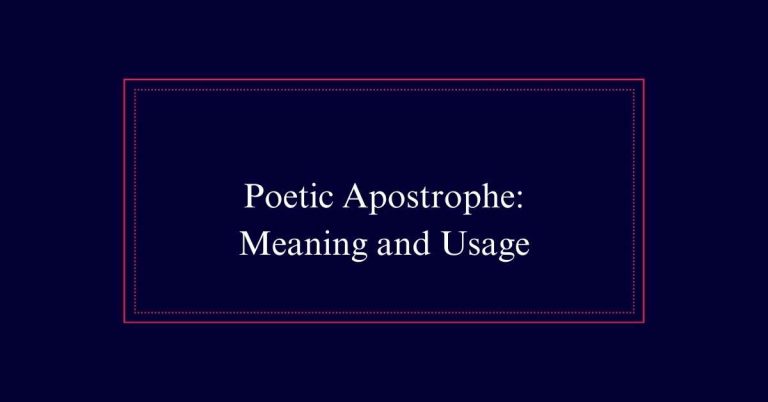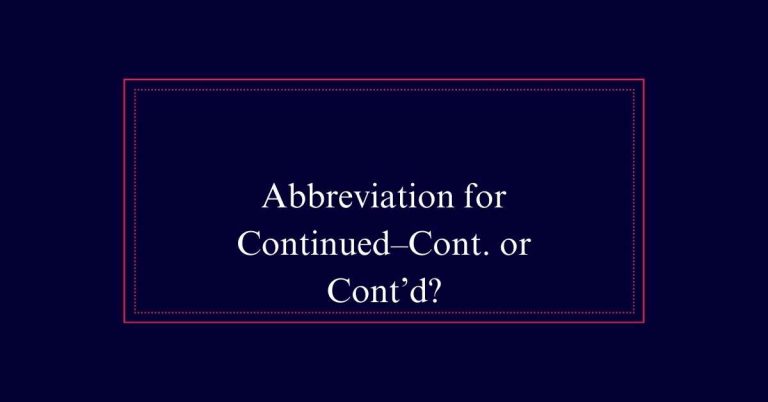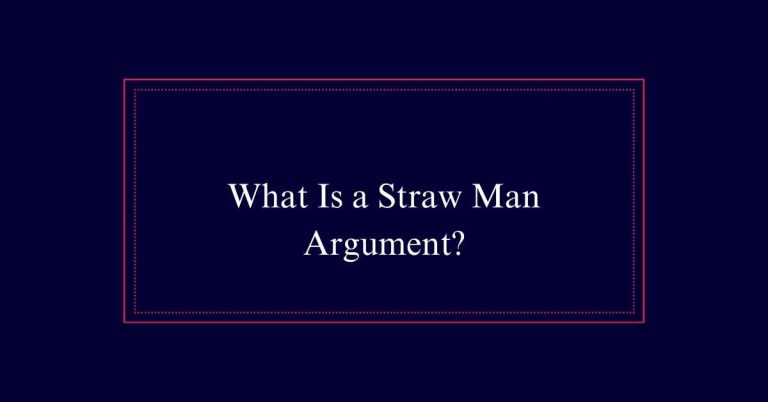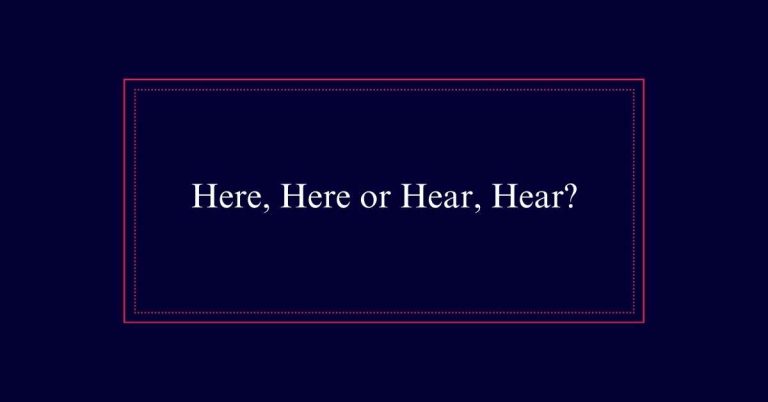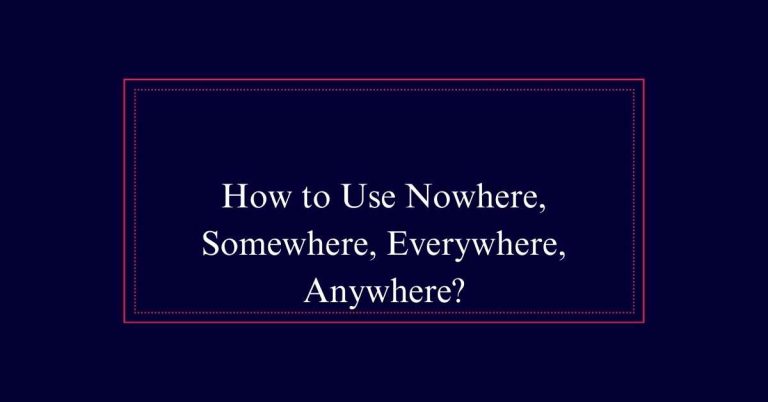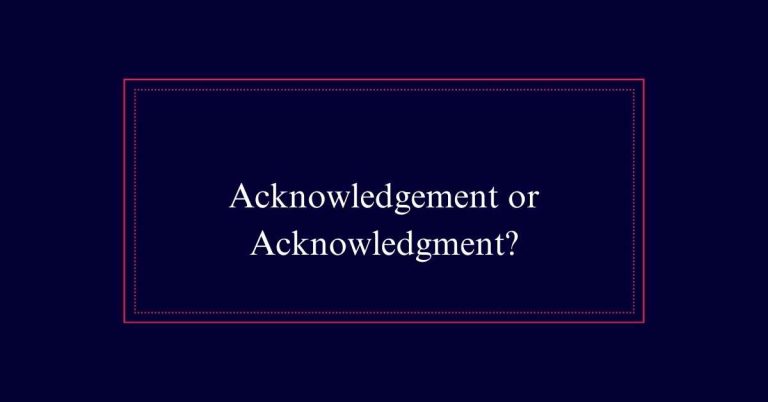Few Vs. a Few—What’s the Difference?
The phrases ‘few’ and ‘a few’ may seem similar but convey different meanings. ‘Few’ suggests a very small, insufficient number, often carrying a negative connotation. For example, ‘Few people attended the meeting’ implies it was underwhelming. Conversely, ‘a few’ denotes a small but adequate amount, usually neutral or positive. ‘A few people attended the meeting’ suggests a modest but sufficient turnout.
Understanding Few
Few is used to denote a very small number of countable items. It highlights scarcity and implies that only one or two items are being considered.
For example, if we say, ‘Few participants attended the seminar,’ it means that the number of attendees was minimal. The word ‘few’ often carries a negative connotation, emphasizing the insufficiency of the quantity.
It is important to use ‘few’ correctly to avoid misunderstandings. When used in sentences, ‘few’ can underscore the limited availability or presence of something.
Understanding A Few
‘A few’ refers to a small but not insignificant number of countable items. It suggests a quantity that is more than one or two but still relatively modest. For example, saying ‘a few books’ implies there are some books—enough to be notable, but not a large number.
This term is often used to indicate there is an adequate amount to be of some importance or use. In sentences, it helps to convey a sense of sufficiency without exaggeration. For instance, ‘I have a few friends in the city’ means there are enough friends to make a difference socially.
Comparing Few and A Few
Understanding the distinction between ‘few’ and ‘a few’ is crucial for precise communication. Both terms modify countable nouns in the plural form but carry different implications. ‘Few’ denotes a smaller number, often implying insufficiency. In contrast, ‘a few’ indicates a small but sufficient quantity. This subtle difference can greatly alter the meaning conveyed.
| Term | Implication |
|---|---|
| Few | Insufficient |
| A Few | Sufficient |
| Few | Scarcity |
| A Few | Availability |
For example, saying ‘Few people attended the meeting’ suggests low turnout, potentially a problem. Meanwhile, ‘A few people attended the meeting’ indicates some participation, enough to proceed.
What Few Indicates
Indicating a small quantity, ‘few’ often suggests an insufficiency or lack. It typically conveys a sense of scarcity, highlighting that the number is less than what might be desired or expected. This term is used to emphasize the minimal count of items or individuals in a given context.
- Scarcity: Few people attended the meeting, indicating low interest.
- Insufficiency: There are few resources available for the project, pointing to a lack of materials.
- Expectation: Few opportunities arose from the job fair, underscoring limited prospects.
In each example, ‘few’ draws attention to the inadequacy or shortfall, helping to set realistic expectations.
What A Few Implies
While ‘few’ highlights scarcity, ‘a few’ suggests the presence of some quantity, indicating more than just one or two. This slight but important difference can change the tone of a message.
For instance, saying ‘a few people attended the meeting’ implies that there was a small but sufficient number of attendees. It conveys a sense of adequacy, rather than lack. In various contexts, ‘a few’ can denote a manageable amount. This term helps in expressing a positive or neutral quantity. It reassures that a certain number exists, making the situation seem less dire.
Quite a Few Explained
‘Quite a few’ indicates a surprisingly large quantity, often more than one might initially expect. This phrase is used to express that the number is notably higher than anticipated. It is important in communication because it provides clarity about quantity.
- Usage in Context: ‘Quite a few people attended the seminar.’
- Comparative Insight: Unlike ‘a few’, ‘quite a few’ indicates a larger number.
- Implication: It suggests an unexpectedly large count.
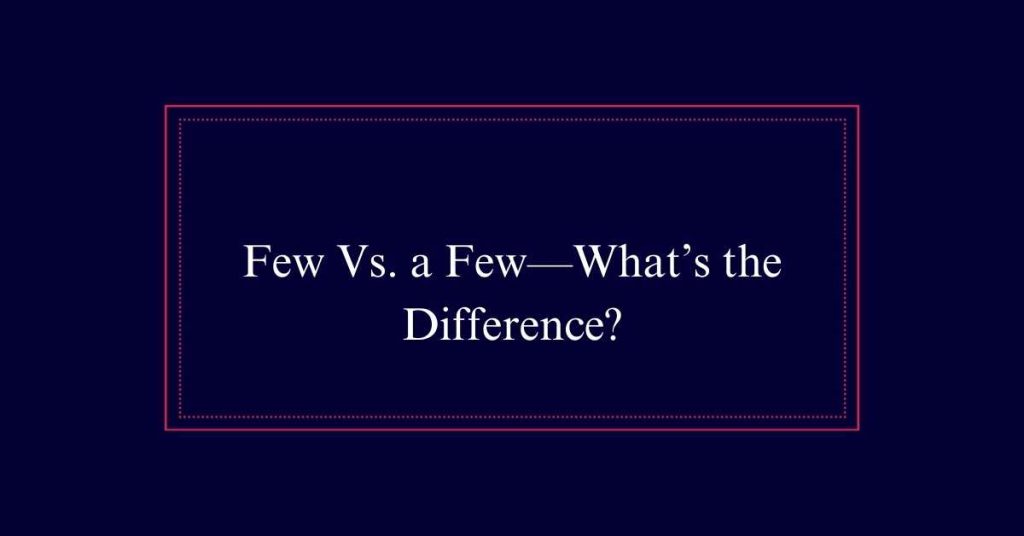
Countable Nouns and Few
Countable nouns refer to items that can be counted individually using numbers. These include objects like books, apples, and cars. When using the term ‘few’ with countable nouns, it indicates a small number, often suggesting insufficiency. For instance, saying “few books” means not many books are present.
Here’s a table to clarify the concept:
| Countable Noun | Usage with ‘Few’ |
|---|---|
| Books | Few books available |
| Apples | Few apples left |
| Cars | Few cars parked |
| Chairs | Few chairs needed |
Examples of Few and A Few
How can we differentiate between ‘few’ and ‘a few’ in practical examples? Understanding these distinctions can greatly enhance our writing clarity.
Consider the following scenarios:
- Few:
‘Few students attended the lecture,’ implying almost none showed up.
- A few:
‘A few students attended the lecture,’ suggesting some, but not many, were present.
- Quite a few:
‘Quite a few students attended the lecture,’ indicating a surprisingly large number showed up.
These examples showcase the impact of choosing the right term. ‘Few’ denotes a scarcity, often with a negative connotation. ‘A few’ suggests a small but sufficient number, offering a more positive outlook.
Importance of Correct Usage
Understanding these subtle distinctions leads us to appreciate the importance of proper usage in communication. Using ‘few’ and ‘a few’ or ‘little’ and ‘a little’ accurately guarantees clarity.
When we misapply these terms, we risk confusing the listener or reader. Precise language helps in accurately conveying quantities and intentions. For example, saying ‘a few errors’ implies a manageable number, whereas ‘few errors’ suggests almost none, a significant difference.
Correct usage also reflects language proficiency and attention to detail. It avoids misunderstandings and enhances the effectiveness of both written and spoken communication. Mastery of these terms is essential for clear, effective, and professional interaction.
Practical Applications
Applying the concepts of ‘few’, ‘a few’, ‘little’, and ‘a little’ can greatly enhance clarity and precision in communication. Practically, these distinctions help convey exact quantities, ensuring your message is clear and understood.
For effective usage, consider the following scenarios:
- Professional Writing: Use ‘few’ or ‘little’ to indicate scarcity in reports or proposals.
- Everyday Conversations: Opt for ‘a few’ or ‘a little’ to imply some amount without overwhelming details.
- Academic Contexts: Apply these terms accurately to present data and findings clearly.
Recognizing the proper context for each term avoids ambiguity and improves overall communication skills. Mastering these distinctions leads to more precise and effective exchanges, whether in writing or speech.
Frequently Asked Questions
Can “Few” and “A Few” Be Used Interchangeably?
No, ‘few’ and ‘a few’ cannot be used interchangeably. ‘Few’ implies a very small quantity, often near zero, while ‘a few’ indicates some quantity that is more than one but not many.
What Are Some Synonyms for “Few” and “A Few”?
Synonyms for ‘few’ include ‘scant,’ ‘scarce,’ and ‘limited.’ Synonyms for ‘a few’ are ‘some,’ ‘several,’ and ‘a handful.‘ These terms help clarify quantity and improve precision in communication.
How Do “Few” and “A Few” Differ in Negative Sentences?
In negative sentences, “few” emphasizes scarcity, implying almost none, while “a few” suggests there are some, though not many. For example, “Few people attended” means nearly no one, whereas “a few people attended” means some did.
How Do “Few” and “A Few” Function in Different Tenses?
In different tenses, “few” and “a few” maintain their core meanings. “Few” indicates scarcity, while “a few” signifies some quantity. For example, “I had few friends” (past) and “I will have a few opportunities” (future).

